Les lampes LED sont omniprésentes de nos jours. Elles permettent d'économiser beaucoup d'énergie, mais ne sont pas aussi performantes que les anciennes ampoules pour ce qui est de l'affichage des couleurs réelles ou de la gradation de l'intensité lumineuse.

Aujourd'hui, il existe une nouvelle technologie appelée TRIAC, utilisée dans les systèmes d'alimentation électrique. gradateurs. Ces lampes remplacent d'autres types d'éclairage dans les maisons où les vieilles ampoules sont encore courantes. En d'autres termes, les TRIAC font souvent partie de ces éclairages.
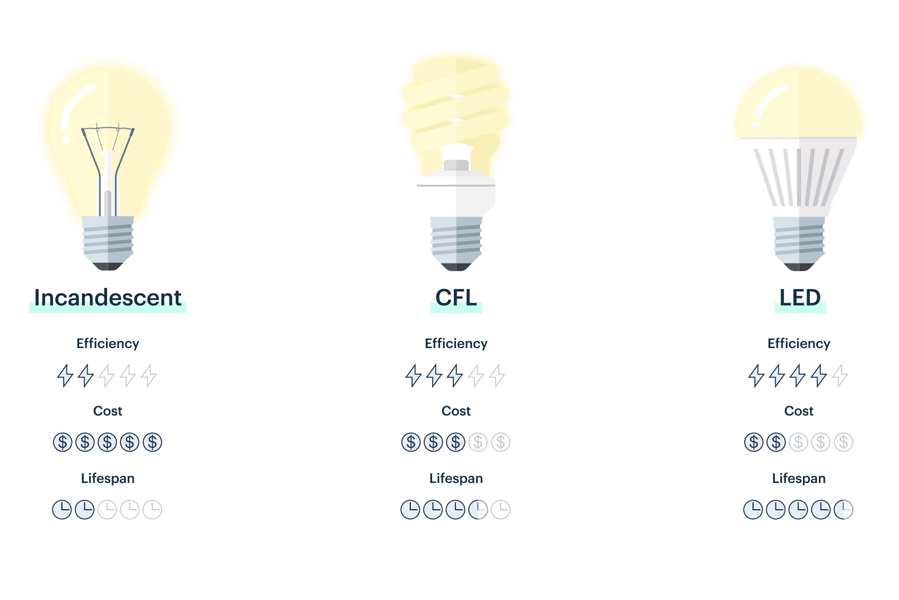
Les LED doivent consommer moins d'énergie et durer longtemps pour être les meilleures. Même avec des pièces bon marché, elles peuvent bien gérer des dispositifs puissants. Cela montre que le TRIAC est idéal pour les lampes et autres appareils électriques importants qui doivent être fiables.
Qu'est-ce qu'un TRIAC ?
Le TRIAC est une pièce électronique à trois connecteurs qui peut faire circuler le courant dans les deux sens lorsqu'elle est allumée. Il s'agit de deux SCR connectés d'une manière unique.
Pour l'activer, un TRIAC a besoin d'un signal de porte comme celui d'un SCR. Son utilisation principale était de mieux gérer l'alimentation en courant alternatif.
Il existe de nombreux types de TRIAC. Ils sont conçus pour gérer différents niveaux de puissance et rester sûrs. Mais la plupart des TRIAC gèrent moins de 50 A, ce qui est moins que les SCR. Ils ne sont donc pas adaptés aux besoins de puissance très élevée. Les TRIAC sont très utiles. Ils peuvent fonctionner avec les deux extrémités de puissance, plus et moins, ce qui les rend très pratiques. Cela signifie qu'ils peuvent être utilisés dans de nombreuses conceptions. Bien que les SCR puissent déplacer le courant dans les deux sens, ils ne sont pas aussi performants que les TRIAC pour les faibles puissances. Les TRIAC sont donc un meilleur choix pour la plupart des gens.

Comment fonctionne la gradation TRIAC
À partir de la phase 0 du courant alternatif, la gradation commence par une baisse de la tension d'entrée jusqu'à ce que la phase 0 du courant alternatif soit atteinte. Variateur TRIAC fonctionne. Cela continue jusqu'à ce que la tension de sortie corresponde à ce qui est nécessaire. Cette gradation modifie la valeur effective du courant alternatif. La première partie ajuste l'angle pour chaque demi-onde de courant alternatif.
En termes simples, les outils de gradation TRIAC agissent comme des interrupteurs rapides, aidant à déterminer le courant dans une lumière LED. Lorsqu'ils sont allumés, ils contrôlent le flux d'électrons à l'intérieur.
En général, il s'agit de couper la forme de la tension, c'est-à-dire d'arrêter l'électricité. Cet arrêt se produit lorsque la charge est pleine.
L'outil TRIAC utilisé dans les ampoules LED a l'avantage de pouvoir modifier les niveaux de luminosité. Comme l'interrupteur est un peu lent, la puissance diminue, ce qui rend l'ampoule moins lumineuse.
La rapidité avec laquelle l'interrupteur fonctionne indique la quantité d'énergie utilisée. Un interrupteur rapide consomme plus d'énergie. En revanche, un interrupteur lent consomme moins d'énergie, ce qui rend la LED un peu moins lumineuse. L'avantage de la gradation TRIAC est qu'elle ne se casse pas facilement et ne scintille pas.
Contrairement à d'autres gradateurs, le gradateur TRIAC est bon pour la durée de vie des ampoules LED. Pour ce faire, on utilise une tension bidirectionnelle sur la grille du TRIAC, qui contrôle l'électricité. Lorsqu'il est activé, le TRIAC laisse passer l'électricité, mais s'arrête si le courant devient trop faible.
Le circuit fonctionne bien avec une tension élevée, mais les courants de commande restent faibles. Le circuit TRIAC, avec contrôle de phase, ajuste le courant dans une charge de circuit.
Si vous utilisez une LED avec un gradateur TRIAC et que vous souhaitez une Pilote de LED à gradation TRIACPour cela, il faut s'assurer que le gradateur est un vrai dispositif TRIAC.
Certains variateurs TRIAC fonctionnent mieux avec des charges résistives. Mais une mauvaise association d'une LED et d'un variateur TRIAC peut entraîner des problèmes tels que le bruit ou le scintillement. Si ces problèmes ne sont pas résolus, ils peuvent réduire la durée de vie des LED.
Pourquoi choisir TRIAC ?
Les TRIAC sont connus pour gérer de grandes tensions et sont utilisés dans de nombreux systèmes de commande électrique. Cela montre que les TRIAC sont adaptés à la commande de l'éclairage, ce que nous faisons tous les jours.
Les circuits TRIAC sont flexibles et offrent de nombreuses possibilités de contrôle et de commutation du courant alternatif. Par exemple, ils peuvent alimenter de petits moteurs et des ventilateurs. Le système TRIAC est simple mais offre un contrôle varié, ce qui le rend utile pour de nombreuses personnes.
Le rôle du contrôleur et du récepteur TRIAC dans les éclairages
Les Contrôleur TRIAC est un moyen détaillé de régler les différentes caractéristiques de la lumière. Il fonctionne en modifiant rapidement la trajectoire du courant électrique, ce qui produit un effet de gradation. Cela ne concerne pas seulement les LED, mais aussi d'autres lampes.
Dans les utilisations à forte puissance, comme l'éclairage ou le chauffage, les TRIAC sont le premier choix. Ils s'allument et s'éteignent plus rapidement que les interrupteurs normaux, ce qui réduit les sons indésirables et le bruit électronique (EMI).
Using a TRIAC receiver lets you adjust the power sent to a device. This is done by always checking the voltage at the TRIAC ends and turning on the device when the voltage is right.
LEDs, also known as light-making parts, are popular because they save energy, last long, and give strong light.

Sure, here’s the content formatted as per your request:
Comment les gradateurs TRIAC s'intègrent dans les systèmes LED
LEDs, also known as light-making parts, are now loved for their low energy use, long life, and strong light. Yet, adjusting their brightness can be hard. This is when TRIAC dimmers help.
By changing the current, TRIAC dimmers adjust light. They switch quickly between on and off states, keeping the current steady. This makes them perfect for dimming LEDs.
But, using TRIAC dimmers with LEDs can be tricky. Before setting up an LED, check if it fits with the dimmer. Next, see if the dimmer can manage the LED’s power needs. Also, connecting the dimmer and LED right is key.
Following these steps, TRIAC dimmers can change LED brightness smoothly, without blinking or other bad effects. Plus, they fit with many LED lights and bulbs.

La gradation à la pointe de la technologie en toute simplicité
In the past, leading edge dimmers were used with normal and spotlight bulbs. Made for these bulbs, they use lots of power, which means they don’t always work with low-energy LEDs.
For LEDs, remember that they use little power. So, they might not meet the power needs of the dimmers. Though LEDs use less energy, they give a lot of light, maybe too much for some dimmers. For dimming LEDs, trailing-edge dimmers, which react better to power changes, are best.
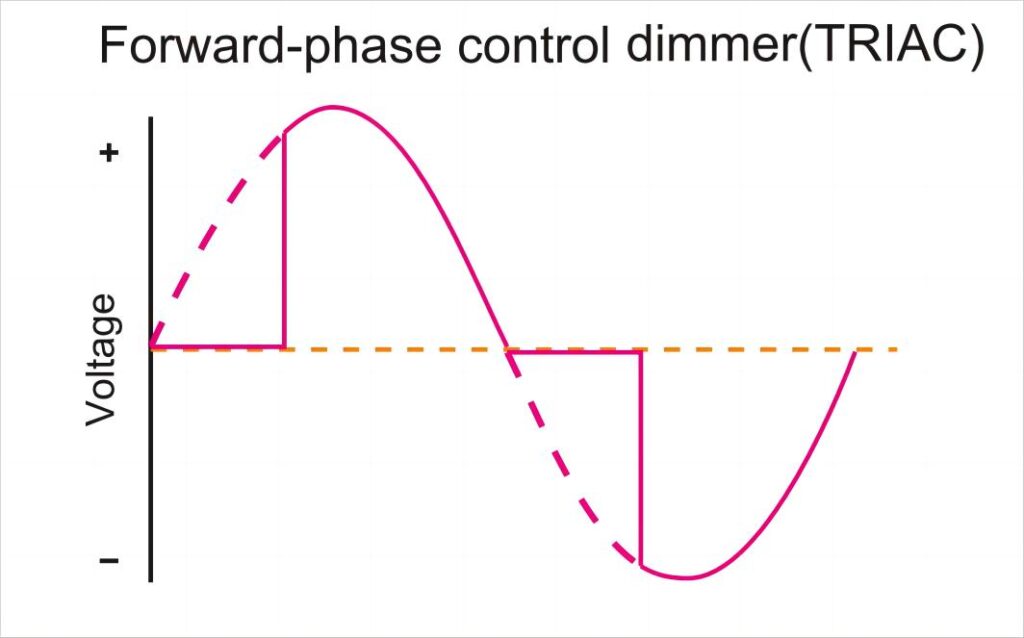
Comprendre l'idée du bord de fuite
Today’s trailing edge dimmers are better than the older leading-edge ones. They dim more smoothly and have less buzzing.
They need less power, so they’re good for LEDs. When using them with LEDs, follow the 10% rule. For example, a 400W dimmer can handle 40W of LED lights, but 400W of normal bulbs.
Trailing-edge dimmers work well with low-power lights, giving the dimming we want without needing lots of power.
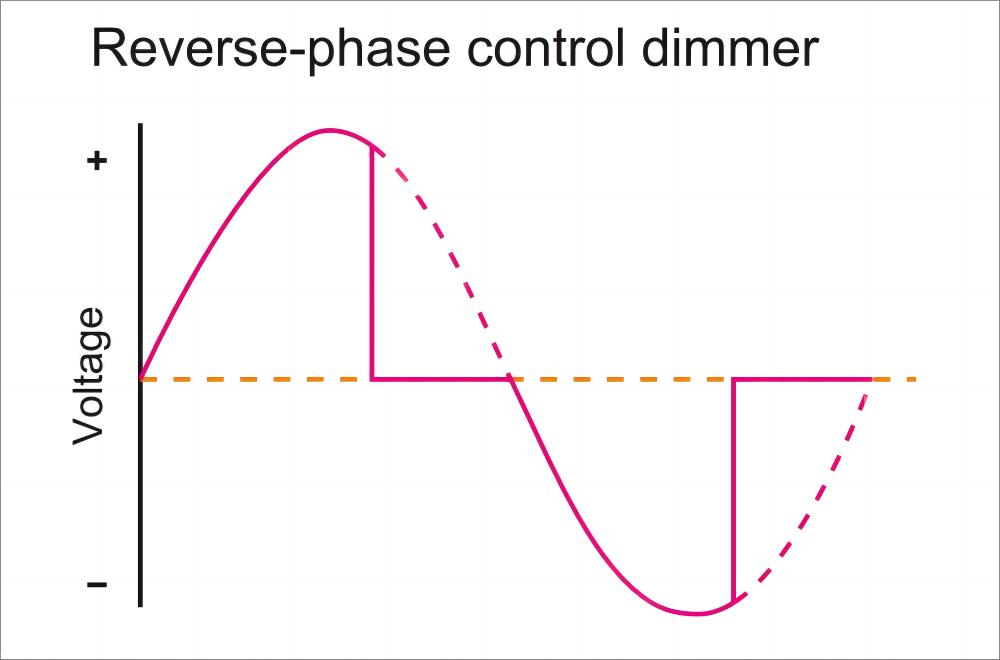
Gradateurs de pointe et gradateurs de queue : Points essentiels
Leading-edge dimmers, used before with normal, spotlight, or wired bulbs, were picked for being easy and cheap. Often named “TRIAC dimmers” because of their switch, they control power use. But, they need a lot of power, so they don’t always fit with low-power LEDs or CFLs today.
Trailing-edge dimmers work silently and smoothly, fitting different building styles. Needing less power, they’re great for circuits with small, energy-saving bulbs.
Comprendre le système TRIAC LED et le configurer
Adding a TRIAC helps change an LED’s brightness. The TRIAC, a part with three ends, needs power on its gate end to turn on. When power is off, it turns off.
Because it can finely control an LED’s power, the TRIAC is great for this. To set up a TRIAC dimmer at home, first change your normal light switch. Join the wall’s black wire to the dimmer’s same colored wire. Then, connect the dimmer’s white wire to the wall’s white one. Last, link the dimmer’s green ground wire to the wall’s plain copper wire.
Qu'est-ce que la gradation ?
Dimming is changing light brightness with just a switch. There are many types of dimming devices available now.
These devices include Triac dimmers, LED dimmers that work between 0–10 V, and pulse width modulation (PWM) dimmers. Each type changes the current, voltage, and frequency in its way, affecting the light from the source.
In the past, Triac dimming was used for regular and small fluorescent bulbs. But now, it works well with LEDs too. Triac dimming has a specific way it works.
Dimming starts at AC phase 0 and goes on until the Triac device is turned on, causing a big drop in input voltage. The angle of conduction changes the voltage shape, making a new shape different from the starting voltage.
Using a certain direction rule, the needed power for the usual load is less. This then lowers the output voltage value (in basic loads).
People in the industry like the Triac dimmer because it’s accurate, efficient, small, light, and works from afar. So, many companies use it. Triac dimming is loved for its low cost, reliability, and low running costs.
À propos de la gradation PWM
PWM, short for pulse-width modulation, is a new way to control analog systems with digital computer output. It works really well.
This method is used in many areas like measuring, talking, power control, changing, and especially, LED lights. Changing analog systems to digital control can save money and energy.
Modern computer chips often have built-in PWM controls, highlighting the ease of digital control. Getting a PWM value is a straight way to check the strength of an analog signal. With detailed counters, the on-off time of the square wave can be adjusted.
Even if the PWM signal is digital, the full DC power might sometimes be there. This causes a voltage or current source that turns on and off regularly, giving power to the analog load.
When the DC power is on, the load is connected. But when off, it disconnects. With the right frequency range, PWM can show any analog value. To understand better, there’s a diagram showing different PWM signals below.
Explication de la gradation des LED 0/1-10v
0-10v dimming is an analog way to dim, special because the driver has two ports: +10v and -10v. Usually, a normal Triac dimmer just has one port for both +10v and -10v.
Dimming works by controlling the current sent by the driver. Here, 0V means total darkness and 10V means full brightness. For example, in a resistance dimmer, if voltage is at 1V, current is at 10%. It goes to 100% when voltage is 10V.
It’s key to see the difference between 0–10V and 1–10V. The first one has an on/off switch. The second one doesn’t, so the light is always on, but can be dim.
Apprendre la gradation DALI
To set up DALI dimming, a two-wire control cable is needed. After the basic setup, advanced light control systems let you change lighting circuits using set rules. With DALI lighting, things like LED downlights and LED spotlights get full control over their light sources.
What makes DALI special is its great dimming range, better than other new dimming methods. Also, new DALI tech has grown its uses, making it good for managing RGBW and Tunable White lights. If you need to change colors in a detailed way, DALI-standard dimming parts are best.
Comprendre le fonctionnement d'une courbe de gradation
A dimming curve is a set rule that a dimmer follows when it works. Once the dimmer gets a signal, it makes sure the light matches a set pattern. Think of the fade pattern shown in a picture next to this.
When shopping for dimmers, the dimming curve is important. It shapes the final light and shows how the digital dimmer does its job.
Examiner différents schémas de gradation
Dimming curves are sorted by how they look on a graph. LEDs, also known as bright little parts, are now popular lights because they use less power, last long, and shine bright.
With straight dimming curves, the light matches the power given. Like, a 25% power signal gives 25% light. But, with curve-like dimming, the light changes as power levels go up. When light is dim, the signal to its driver changes slowly. But, when it’s bright, the change is fast.
Dimmers can be set with shapes like the “S” shape or a “soft straight” shape. These power ranges, called “sliders,” help give more control over part of the total power range. For the best look, especially in buildings, picking “straight” or “curve-like” for all devices is best.
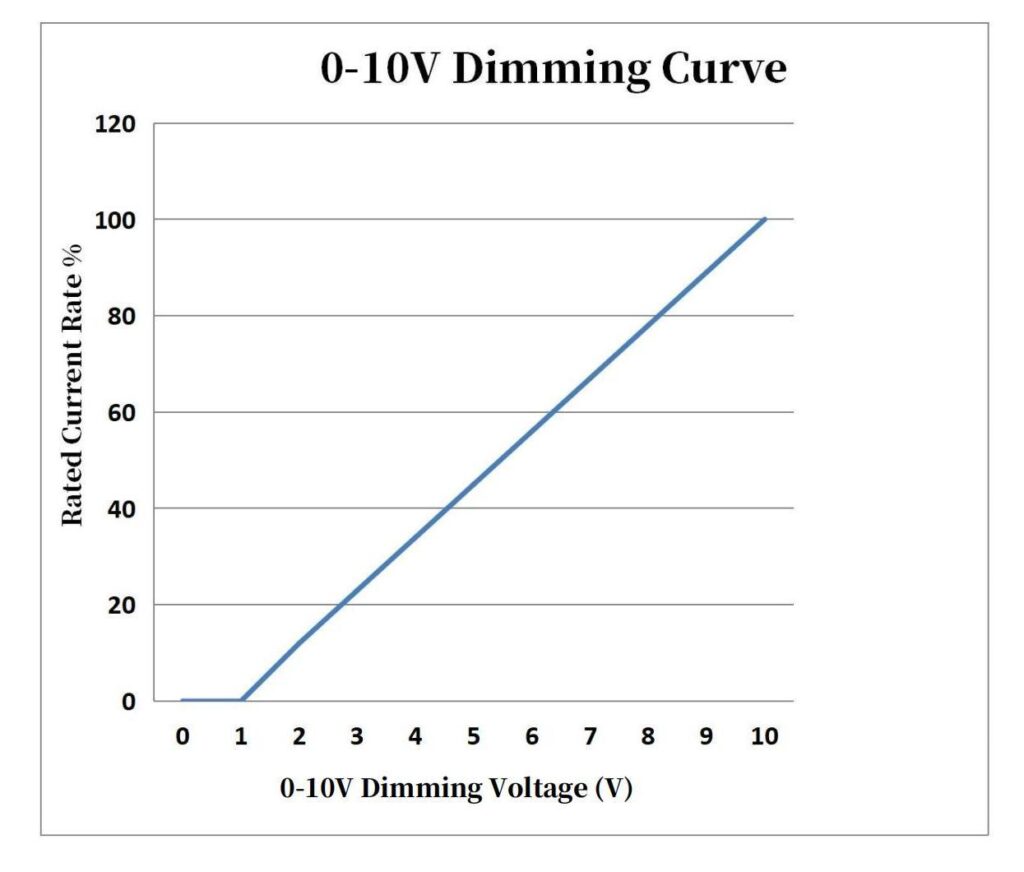
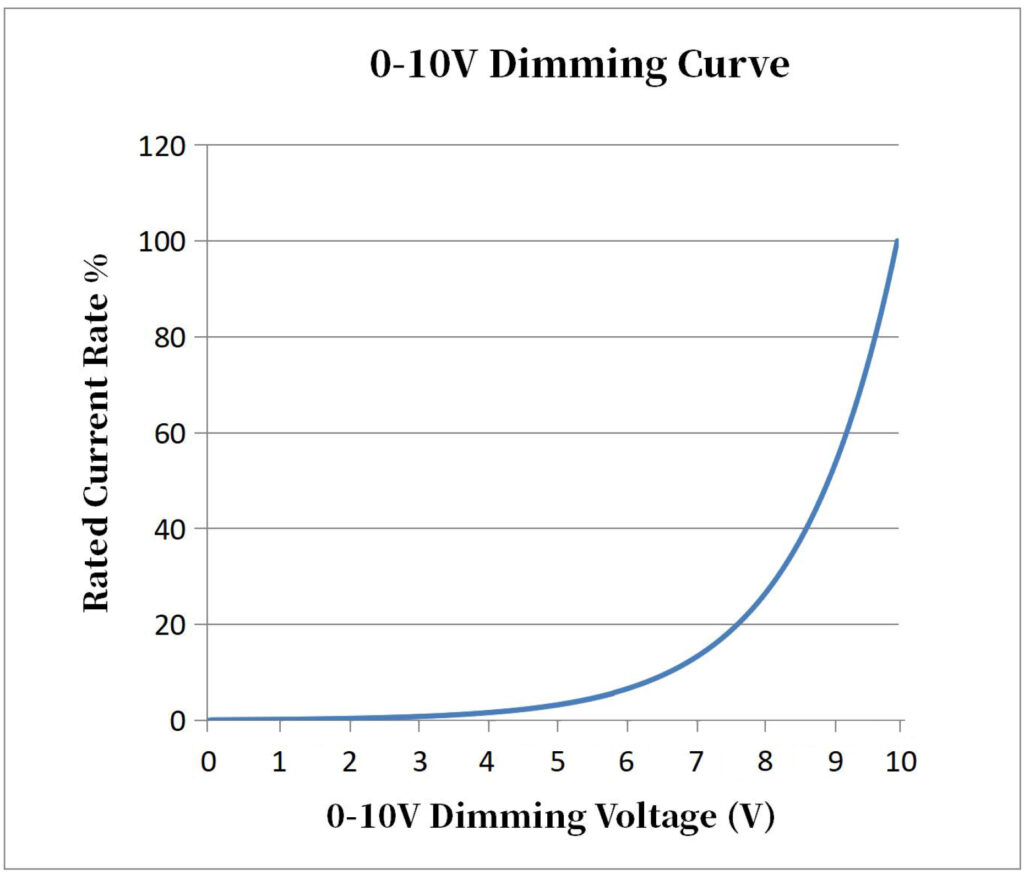
Avantages et inconvénients de l'utilisation de gradateurs TRIAC avec des LED
TRIAC dimming has many good sides like being efficient, adjusting well, being light, small, and easy to use with a remote. Right now, it’s a popular dimmer type you can buy.
A big plus, with LED lights, is that it’s cheap to use. But, TRIAC dimmers have issues too. They can’t dim all the way sometimes. Even at the dimmest, a little power still goes through its switch, which is a problem that’s not fixed yet for LED dimming.
Mieux comprendre la gradation du bord d'attaque
In the past, these dimmers were mainly used with normal and halogen lights. They were made for those lights and need a lot of power. So, they don’t work that well with power-saving LEDs.
If you use these dimmers with LEDs, know that LEDs use so little power they might not turn on these dimmers. LEDs, though power-saving, can shine very brightly, maybe too much for some new dimmers. For dimming LEDs, trailing-edge dimmers are better as they react well to power changes.
Comprendre ce qu'est l'assombrissement du bord de fuite
New trailing-edge dimmers are better than the old leading-edge ones. They fade lights quietly and smoothly and have less issues. They need less minimum power, so they’re great for LEDs.
When dimming LEDs with these, follow the 10% rule. For example, a 400W dimmer can handle 400W of normal lights but only 40W of LED lights. These dimmers are best for dimming lights that don’t need much power, without issues of old dimmers that need lots of power.
Telling Leading-edge and Trailing-edge Dimmers Apart
In the past, leading-edge dimmers, sometimes called “TRIAC dimmers” because of their switch, were chosen for normal, halogen, or special magnetic lights. They were easy to set up and cheap, which made them liked. But, they need too much minimum power for new low-power LEDs or CFLs.
On the other hand, trailing-edge dimmers are quiet, smooth, and made in a detailed way. This makes them fit well in many places. Plus, they work great with setups that use newer, power-saving lights.
Produits apparentés

TRIAC Dimmable LED Drivers 5-240W
FAQ
What is a triac dimmer?
A triac dimmer is an electronic device used to control the voltage and, consequently, the light intensity of incandescent or halogen bulbs. It operates using a component called a “triac” (Triode for Alternating Current) to modulate the voltage supplied to the light source, allowing for a range of brightness levels.
How does a triac dimmer differ from other types of dimmers?
Triac dimmers are distinct from other dimming technologies primarily because they use a triac component to cut off portions of the AC waveform, either at the beginning or the end, to reduce the voltage supplied to the lamp. This contrasts with other dimming methods, such as pulse-width modulation (PWM) or variable resistors, which adjust light intensity through different mechanisms. Triac dimmers are particularly popular due to their efficiency and compatibility with many traditional light sources.
Are triac dimmers compatible with all types of light bulbs?
Not all light bulbs are compatible with triac dimmers. While they work exceptionally well with incandescent and halogen bulbs, many LED and compact fluorescent lamps (CFLs) may not be compatible or may require a specific type of triac dimmer. It’s essential to check the bulb’s specifications or manufacturer’s recommendations before pairing it with a triac dimmer to ensure optimal performance and longevity.
What are the benefits of using a triac dimmer in lighting systems?
Triac dimmers offer several advantages in lighting systems:
Efficacité énergétique : By reducing the voltage supplied to the light source, triac dimmers can lead to energy savings, especially when lights are frequently operated at reduced brightness.
Ambiance Control: They allow users to adjust the light intensity to create the desired ambiance or mood in a room.
Durée de vie prolongée de l'ampoule : Dimming lights can extend the lifespan of bulbs, as they operate at lower temperatures and reduced stress.
Cost-Effective: Triac dimmers are generally more affordable than some other advanced dimming technologies, making them a popular choice for many households and businesses.
Are there any potential issues or drawbacks associated with triac dimmers?
While triac dimmers offer numerous benefits, there are potential issues to be aware of:
Compatibility Issues: As mentioned earlier, not all light sources, especially some LEDs and CFLs, are compatible with triac dimmers. Using an incompatible bulb can lead to flickering, reduced bulb life, or even damage.
Electromagnetic Interference (EMI): Triac dimmers can produce EMI, which might interfere with other electronic devices in proximity.
Noise: Some triac dimmers can produce a humming or buzzing sound, especially at lower dimming levels. This noise is often more noticeable with certain types of bulbs or lower-quality dimmers.
Heat Production: Triac dimmers can generate heat, especially when dimming high-wattage bulbs. It’s essential to ensure adequate ventilation and avoid installing them in confined spaces.










